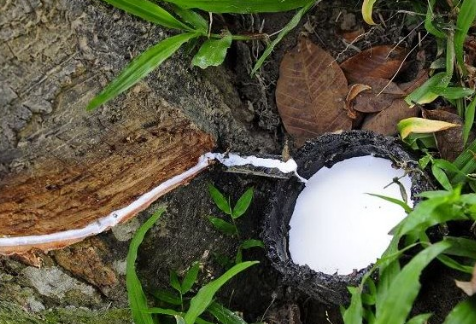Natural rubber import of Shandong province in Jan.-Feb.
Statistics released by Qingdao Customs show that Shandong ports imported 192,000 tons of natural rubber in the first two months, down 35.5% year on year; the import value was 1.88 billion yuan, down 52.2%; and the average import price was 9,793 yuan/ton, down 26%.

Four features of natural rubber import
First, Shandong's natural rubber import in Feb. dropped sharply and the monthly average import price kept decreasing.
Shandong ports' monthly natural rubber import volume kept stable for three consecutive months since Nov. 2017, until a sharp decline in Feb.
Shandong imported natural rubber of 66,000 tons in Feb., down 51.7% year on year, or down 48% from Jan., touching a new low since Feb. 2009.
The monthly average import price dropped for four consecutive months from Oct. 2017, and stayed at 9,655 yuan/ton in Feb., down 30.4% on year, or down 2.1% from Jan., touching a new low since Nov. 2016.
Second, nearly half imports were in terms of processing trade.
Shandong ports imported 93,000 tons of natural rubber in terms of processing trade in the first two months, down 4.8% and accounting for 48.3% of the ports' total imports.
About 74,000 tons were imported in terms of special Customs supervision, down 59.2% and accounting for 38.6% of total imports; while 25,000 tons were imported by general trade, up 35.3%.
Third, private enterprises led the imports.
Private enterprises imported 127,000 tons of natural rubber through Shandong ports in Jan.-Feb., down 27.6% year on year and accounting for 65.8 percent of total imports.
During the period, SOEs imported 33,000 tons, down 58%; and foreign-funded enterprises imported 33,000 tons, down 26.9%.
Fourth, most imports were from ASEAN.
Shandong ports imported 190,000 tons of natural rubber from ASEAN in the first two months, down 35.6% and accounting for 98.7% of the total.
Included were 139,000 tons from Thailand, down 29.6%; 28,000 tons from Malaysia, down 35.5%; and 18,000 tons from Indonesia, down 60.5%.
Two factors for the decrease
First, high inventory and weak demand resulted in enterprises' reluctance to import.
As of Mar. 2, Qingdao Free Trade Zone's rubber inventory grew about 3.2% from mid-Jan., representing a net increase of nearly 8,000 tons; on the same day, Shanghai Futures Exchange's natural rubber warehouse receipts surged to 437,000 tons, hitting a record high in the same period in history.
Furthermore, winter is an off season for tire production, and the Spring Festival is either in Jan. or in Feb., most tire enterprises were on vacation.
As of Feb. 23, the capacity utilization of all-steel tire producers in Shandong was 58.19%, down 9.76% from Jan.; while that of domestic semi-steel tire producers was 61.83%, down 8.84% from Jan.
In addition, environmental protection inspection forced many producers closed down, the downstream's demand was weak, and the import demand was restrained.
Second, the three rubber producing countries reached an agreement to limit rubber export, which repressed Shandong ports' natural rubber import.
Thailand, Indonesia and Malaysia's rubber export restriction agreement became effective from Jan. to Mar., during which Thailand's rubber export lessened 240,000 tons, Malaysia's dropped 20,000 tons, and Indonesia's decreased 95,000 tons.
In Jan., Thailand's rubber export lessened 100,000 tons.
Under the situation, global rubber price increased from 1.40 US dollars/kg. early this year to 1.55 dollars/kg., up 10%.
Rubber export restriction and higher global market price further restrained Shandong ports' natural rubber import.
- Tireworld Insight: Domestic tire makers eye overseas expansion
- Tireworld Insight: Price disparity severe between China's rubber exports and imports
- Tireworld Insight: China tire exports dependent on US market performance
- Tireworld Insight: SHFE rubber expected to move in tight range in short-term
- Tireworld Insight: Rubber futures to test near-term resistance at 15,000 yuan/tonne
- Tireworld Insight: China’s tire industry on track of rapid growth






